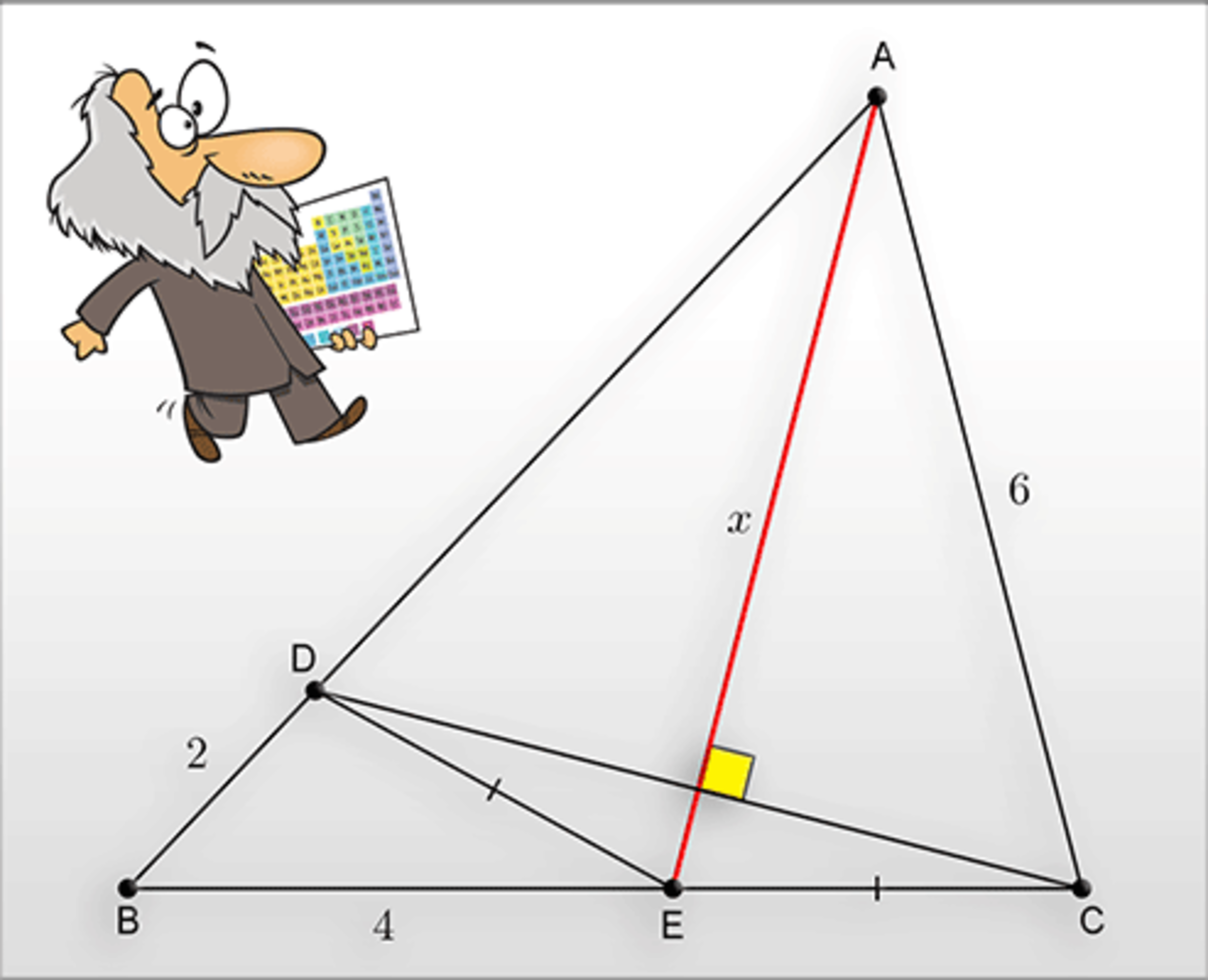This section requires Javascript.
You are seeing this because something didn't load right. We suggest you, (a) try
refreshing the page, (b) enabling javascript if it is disabled on your browser and,
finally, (c)
loading the
non-javascript version of this page
. We're sorry about the hassle.
3 solutions
It is clear that triat triangles ADE & ACE are congruent and, therefore, AD=AC=6 units and AE is the angle bisector of <A. Hence, AB/AC=BE/EC or BE/EC=8/6 which yields, EC=3. Now, it is a simple matter of determining the angle bisector length which is given by: x²=bc(1-(a/(b+c)²) where a=7, b=6 & c=8. Just plug in the values and obtain x²=6x8(1-(7/14)²)=48x3/4=36 or x=6 units.
△
A
D
E
≡
△
A
C
E
(
RHS
)
,
△
A
D
F
≡
△
A
C
F
(
RHA
)
.
Thus, B E : E C = 4 : 3 .
When D G = a , 1 6 − ( 2 + a ) 2 = 9 − a 2 , a = 4 3 = E F .
After some calculations, it is obvious that x = 6 .

Given D E = E C and A E = x
From the figure:
∙ Consider the triangles Δ O D E and Δ O C E :
here ∗ D E = E C
∗ O E = O E
∗ ∠ D O E = ∠ C O E = 9 0 ∘
This implies Δ O D E ≅ Δ O C E
Therefore by congruent parts of congruent triangle ( C P C T ) O D = O C
∙ Similarly, we consider the triangles Δ A O D and Δ A O C :
Here ∗ O D = O C
∗ O A = O A
∗ ∠ A O D = ∠ A O C = 9 0 ∘
This implies Δ A O D ≅ Δ A O C
Therefore by congruent parts of congruent triangle ( C P C T ) A D = A C = 6
∙ Now we check the similarity between two triangles Δ B E A and Δ B D E :
D E A E = D B B E = B E A B
we know that A B = A D + D B = 6 + 2 = 8 (Since we know that A D = 6 from second proof)
By substituting the respective values of A B = 8 , B E = 4 , D B = 2 , A E = x
we get D E x = 2 4 = 4 8
this implies D E x = 2 ; such that x = 2 ( D E ) ; Or D E = E C = 2 x
∙ Now let us take ∠ A E B = θ so ∠ A E C = 1 8 0 − θ
In Δ B E A and Δ C E A by applying law of cosines we get
cos θ = 8 x x 2 + 4 2 − 8 2 ⟶ ( 1 ) and cos ( 1 8 0 − θ ) = 2 ⋅ E C ⋅ x E C 2 + x 2 − 6 2 ⟶ ( 2 )
we know that cos ( 1 8 0 − θ ) = - c o s ( θ ) and by putting E C = 2 x ( From the 3 rd proof)
we reform equation ( 2 ) as − cos ( θ ) = 2 ⋅ ( 2 x ) ⋅ x ( 2 x ) 2 + x 2 − 6 2 ⟶ ( 3 )
By adding equation 1 and 3 and on rearranging it we get a cubic equation in terms of x i.e x 3 + 1 0 x 2 − 4 8 x − 2 8 8 = 0 on solving this equation
we get x = 6 or A E = 6